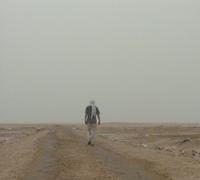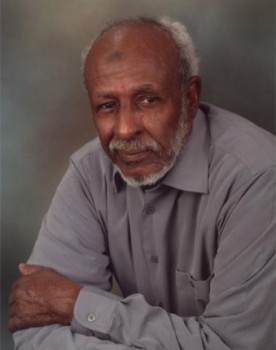SOMALI (Af-Soomaali)
Somali is a Lowland East Cushitic language of the Afroasiatic super-family spoken by some 12 million people in the eastern Horn of Africa as well as in the Somali diaspora in North America, the United Kingdom, Scandinavia, Italy, the Gulf States and other parts of the Middle East.
Poetry is right at the heart of Somali expressive culture and has been composed for as long as we know. Given the oral nature of this poetry, much has been lost over time, but the tradition was already very well-established by the 19th century. According to B.W. Andrzejewski, the earliest poem within Somali collective memory is an 18th century meditation by Sheekh Cali Cabduraxmaan. Other classical poems include the works of 19th century poet Raage Ugaas and those of Sayyid Maxamed Cabdille Xasan, leader of the Dervish movement and resistance against foreign colonization in the early 20th century. Somali poetry is metrical and alliterative, and poems generally fall under one of two broad categories: maanso or hees. Maanso are poems by named authors which deal with serious issues, often with arguments to advance—for example, the gabay. Lighter poems are called hees and are sung, often with musical accompaniment. They include work songs, dance songs, and the modern urban form, heello.
The first major poetry collection to appear in English translation was B.W. Andrzejewski and I.M. Lewis’ Somali Poetry: An Introduction (1964) using Shire Ahmed Jaama’s orthography. Work was undertaken towards preserving the poetry of some of the most important early poets by Somali poets and scholars like Muusa Galaal in the 1960s and 1970s. In the mid-70s Maxamed Xaashi Dhamac ‘Gaarriye’ and Cabdullaahi Diiriye Guuleed wrote revolutionary essays on Somali metrics for the newspaper Xiddigta Oktoobar. Over the next two decades, several anthologies including Poesia Orale Somala: Storia di una Nazione were published in Italian and English translation while Hal-Karaan, the collected works of Maxamed Ibraahim Warsame ‘Hadraawi,’ widely regarded as the best poet in the language today, was published in Norway in 1993. Many noted contemporary poets still have their work transmitted traditionally by xafidayaal (memorizers), though today’s Somali audiences also hear new poems via cassette tapes and radio as well as live performance. Internet publication and some print publication have also made new poems widely available, particularly in the diaspora.
Selected poems in Somali and English (translations by Dr. Martin Orwin) in PDF format.






